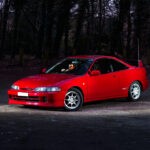BMC vs. K&N: Which Air Filters are Better?
Air Filters are the most important component system of a vehicle induction system. They play a significant role in the performance, exhaust, and fuel efficiency of the engine. However, they are often overlooked. Air Filters block the contaminants in the air and let clean air into the engine’s combustion chamber.
OEM and High-Performance Air Filters
Most of the daily used cars in the market contain paper filters, termed OEM (Original Equipment Manufacturer) filters. They filter the air greatly and are a good choice for normal drivers.
But some car enthusiasts are interested in aftermarket high-performance filters. A high-performance air filter is formerly known as a high-flow air filter, which adequately distinguishes it from a standard air filter. For most cars, these filters aren’t a necessity, since the manufacturer has not added them by default. But if you are interested in your car’s modification, to give it more feel and increase the engine’s performance. Then, you can go with high-performance air filters.
In this article, we will talk about two such aftermarket air filters, BMC and K&N, discuss the pros and cons of each, and then you can find out which one is better for your vehicle.
Also read: 3 Reasons Why Luxury Cars Depreciate so Quickly
BMC vs K&N Air Filter. Which One is Better?
BMC and K&N are two notable manufacturers of high-performance filters. Let’s talk about each of these manufacturers’ filters individually.
BMC Air Filters
BMC was founded by an Italian motorcyclist, Gaetano Bergami, in 1973. Initially, it started developing racing motorbikes. In 1996, started manufacturing high-performance air filters for racing cars.
BMC Air Filters are developed by a multi-layered fabric soaked in low-viscosity oil, sandwiched between two Aluminium mesh frames. To protect the Aluminium mesh from oxidation by fuel vapors and air humidity, it is coated with epoxy resin.
In addition, sieving and retention techniques are used to remove contaminants, which are intercepted by cotton fibers and subsequently captured by the oil. Since the airflow path is not obstructed, the air filter’s performance is guaranteed to remain stable throughout time. BMS uses a process known as “Full Molding” to create its distinctive red air filter from a single mold, eliminating the need for glue in the corners to keep it from breaking.
The interesting fact is that BMC Air filters are washable and reusable. You can use water and a suitable detergent to clean the filter. Since, the filters originally have an oil layer applied on them, that allows air but blocks foreign objects. So, filters must be re-applied with a thick coat of oil after they have been washed.
K&N Air Filters
K&N story begins in the 1960s when two motorcycle racers, Ken Johnson and Norm McDonald (K&N), thought of making a new kind of filter; an oiled air filter.
A standard disposable paper filter operates on the surface loading principle, which results in a high level of contaminant capture but a low level of airflow, reducing engine performance. In comparison, K&N High-Flow Air Filters utilize depth loading, which employs numerous layers of pleated cotton fibers to trap particles on many levels.
While most conventional paper or foam filters would face an unacceptable drop in airflow in exchange for a substantial improvement in efficiency, K&N filters are particularly developed to trap the dirt while maintaining a high volume of airflow.
K&N filters are built from a urethane frame to last very long and soaked in original red oil, that holds dirt and debris. A pleated mesh covers both sides of the cotton filter material and offers a durable construction. Like BMC filters, the K&N Air Filters are also washable and reusable.
A Comparison Between BMW and K&N Air Filter
Now, let’s compare these two types of engines in terms of cost, induction noise, performance, and build quality.
Cost Difference
On average, the standard OEM filters cost around $22. Then, K&N filters start at about $55. Lastly, BMC filters have an average starting price of $97.
Also read: Does Engine Oil Brand Matter? Can You Buy a Random Brand?
Air Flow
Most reviews on these two types of filters suggest that BMC has a higher airflow compared to K&N filters since it has fewer layers of filtration.
Induction Noise
If you have replaced the OEM filter with K&N or BMC, you will hear a louder induction noise. And in between these two filters, BMC gives slightly more induction noise compared to the K&N.
Major Improvement in Power/Performance
Though the high-performance slightly increases the engine power, the difference is not noticeable. In terms of power performance, both of them are equally good. No one is superior to the other.
Build Quality and Surface Area of the Filter
Speaking of build quality, BMC has much higher build quality than the K&N. In addition, the surface area of the BMC filter is also larger than BMC. BMC fits well in the OEM airbox.
K&N filter falls short of expectations in terms of quality. It fits well in the OEM airbox, however, its filtering area is smaller than that of the BMC filter. Whereas, if you compare the quality of these two filters with OEM, it offers much better build quality. But the filter capabilities of these aftermarket filters are better.
| Parameters | Comparison of Filters |
| Cost | BMC > K&N > OEM |
| Induction Noise | BMC > K&N > OEM |
| Power / Performance | BMC = K&N > OEM |
| AirFlow | BMC > K&N > OEM |
| Build Quality | OEM > BMC > K&N |
| Surface Area | BMC > K&N |
Pros and Cons of BMC Air Filter
Since I have individually explained BMC filters earlier, now let’s talk about their pros and cons.
Pros
- BMC air filters are made of cotton, a natural material that can be reused several times.
- They contain a strong Aluminium Mesh frame.
- They are washable and reusable
- BMC manufacturers claim a 98.5 filtering efficiency compared to the standard filters.
- BMC offers a two-year warranty on their filters
Also read: How Much is A Lamborghini Oil Change? (Explained)
Cons
- BMC filters are expensive compared to other filters.
- They provide no significant power gain compared to OEM filters.
Pros and Cons K&N Air Filter
Now, let’s talk about the pros and cons of the K&N filter.
Pros
- K&N filters can also be washed and reused.
- They are built from urethane which makes them last longer.
- K&N filters have filtration efficiency between 97 to 99%.
- The company claims that the airflow is increased 50% times more than the paper filters
- They have oiled cotton filtration layers that capture the contaminants.
- K&N offers a 10-years or million miles warranty on their products.
Cons
- K&N air filters have slightly less surface area compared to BMC
- They don’t provide an excellent surface finish.
- K&N filters provide no significant performance gain compared to OEMs.
Which One Provides Extra Sound Improvement and Power Gain?
Power gain is similar in these two high-performance filters, approximately 2-5 HP. But the improved sound and quality of the BMC filter over the K&N prompted me to select the BMC filter over the K&N. In addition, lesser surface area and comparatively low build quality, led me to choose BMC or K&N. BMC is also a choice for most sports and racing cars.
Since the performance of these two filters is the same and is K&N filter is comparatively cheaper. So, you can also go for it, if you need an affordable high-performance filter.
Sources:






